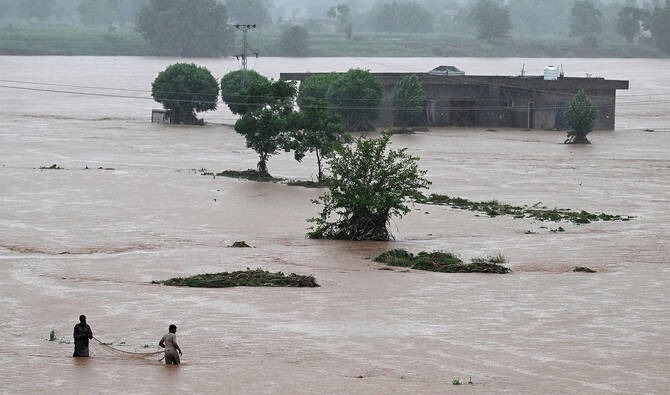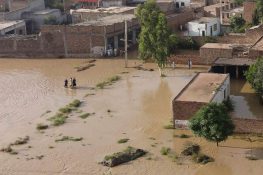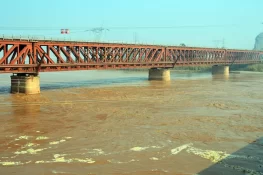Nationwide Weather Alert
Pakistan’s National Disaster Management Authority (NDMA) has issued a nationwide alert warning of intense rainfall and the possibility of severe flooding in the coming days. The agency has urged citizens, district administrations, and emergency services to take precautionary measures in advance.
The alert comes as Pakistan enters its peak monsoon season, a period historically linked with destructive floods. In recent years, erratic monsoon patterns—worsened by climate change—have led to devastating losses. The 2022 floods, for example, killed more than 1,700 people and displaced millions.
Risk Areas Highlighted
According to the NDMA, several regions face heightened danger due to forecasted heavy rains. The risks include flash floods in mountainous terrain, urban flooding in cities, and landslides in vulnerable hilly districts.
Khyber Pakhtunkhwa
Northern districts such as Chitral, Dir, Swat, Kalam, Mansehra, Battagram, Abbottabad, and Haripur are expected to experience torrential rain with the threat of landslides. In nearby Gilgit-Baltistan, heavy flooding has already caused major disruption, as a section of the Naltar Expressway was swept away, leaving tourists stranded.
Central areas including Mardan, Swabi, Peshawar, Charsadda, Nowshera, Kohat, and Hangu may see urban flooding, especially in low-lying neighborhoods.
In the southern belt—covering Dera Ismail Khan, Bannu, Lakki Marwat, Waziristan, Kurram, and Bajaur—seasonal streams could overflow, inundating villages and disrupting road access.
Punjab
Northern Punjab, including Rawalpindi, Islamabad, Attock, Jhelum, Chakwal, and Talagang, is at risk of flash floods in urban centers. Central districts such as Mianwali, Khushab, Sargodha, Faisalabad, Mandi Bahauddin, and Gujrat are forecast to receive strong showers accompanied by gusty winds.
In the northeast, Gujranwala, Sialkot, Hafizabad, and Narowal could face severe waterlogging after downpours. Lahore, Kasur, and Okara are also vulnerable to urban flooding.
The NDMA further warned of rising water levels in major rivers, including the Ravi, Sutlej, and Jhelum, as well as in their tributaries.
Azad Jammu and Kashmir
In the territories of Poonch, Muzaffarabad, and Kotli, heavy rains may trigger landslides and flash floods, creating hazardous conditions for residents and travelers alike.
Balochistan
The southwestern province is also expected to endure prolonged heavy rainfall. Northern districts such as Quetta, Zhob, Ziarat, Loralai, Kalat, Nushki, Sibi, Dera Bugti, Sui, and Kharan may face urban flooding. In southern Balochistan—including Khuzdar, Awaran, Washuk, Turbat, Hingol, Ormara, and Gadani—seasonal rivers could swell rapidly, sweeping through mountain valleys.
Public Safety Measures
The NDMA has advised the public to avoid unnecessary travel, stay informed of weather updates, and keep vehicles parked in safe locations. Citizens have also been urged to stay away from trees, electricity poles, billboards, and weak structures during storms.
People living in low-lying settlements, floodplains, or landslide-prone areas have been strongly encouraged to postpone travel and remain alert.
Preparedness Instructions for Local Authorities
District administrations have been instructed to keep drainage equipment ready, monitor rivers and bridges, and issue timely alerts to communities. Emergency services and relief agencies have been asked to ensure swift response capacity in case of flooding or landslides.
The NDMA further warned of rising water levels in major rivers, including the Ravi, Sutlej, Jhelum, and the Chenab. Authorities in Punjab have already issued a flood alert for the Chenab River amid rising water levels, raising concerns for communities along its banks.
Broader Context
Pakistan remains one of the countries most vulnerable to climate change. Experts warn that rising global temperatures are intensifying the South Asian monsoon system, increasing both the frequency and severity of extreme weather events.
Flooding is particularly dangerous because it strikes rural farming regions as well as densely populated cities. Losses typically extend beyond human casualties, damaging crops, infrastructure, and livelihoods.
As the monsoon continues, the NDMA’s alert serves as both a warning and a reminder of the urgent need for resilience in disaster management.















